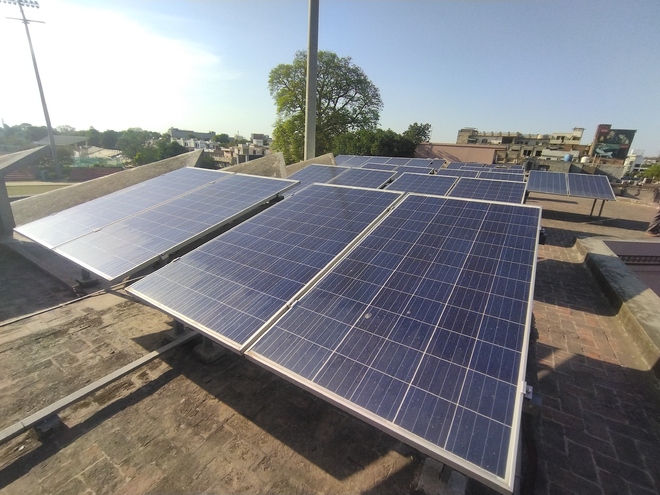
Rooftop solar has been the fastest growing sub-sector in clean energy lately, with a compound annual growth rate of 47 per cent between 2016 and 2020
Neeraj Bagga
Tribune News Service
AMRITSAR, APRIL 9
Steady hike in power tariff every year is driving many consumers from diverse sectors like domestic, institutional, commercial and industries to opt for renewable energy.
Sumit Aggarwal, CEO of Star Power Distribution Pvt Ltd, says current year is likely to be promising with good investments in solar sector by all segments like residential, commercial, MSME and large industries. About 80 per cent of the rooftop installations come from the Commercial and Industrial (C&I) sector, which is slowly gaining demand. “Demand for residential rooftop solar power is also expected to grow as people look for alternatives to cut expenses and generate revenues,” he tells. Rooftop solar has been the fastest growing sub-sector in clean energy lately, with a compound annual growth rate (CAGR) of 47 per cent between 2016 and 2020.
The months of the lockdown motivated the residential clients to utilise their idle roofs and save hefty electricity bills, which before the Covid-19 was not a priority. Even the commercial and MSME clients showed interest in investing their roofs for solar investments.
Kamal Dalmia, an industrialist, said the government’s Subsidised Industrial Power Tariff (SIPT) scheme offering Rs5 per unit power supply actually cost them Rs7.50 per unit. The Punjab State Electricity Regulatory Commission (PSERC) offers an energy rate of Rs4.83/kVAh for consumption of power not exceeding the threshold limit. Though it costs over Rs1,350 crore per annum burden of subsidy to the government, the power tariff was actually higher than what was being offered in the neighbouring states creating uneven competitive structure.
Club together farming, social groups like Scheduled Castes and Industry receive a huge subsidy to the tune of Rs14,000 crore every year. Thus, this reason is enough for the government to come out with attractive policies to incentivise solar energy to attract a maximum number of consumers.
Annual growth rate of 88 per cent in solar energy is projected between 2020 and 2025 in the country. So the demand has increased in the city also. For instance, with the assistance of US-based Sikhs the SGPC initiated to install a solar power system at the Golden Temple last month. The Amritsar Improvement Trust (AIT) had inaugurated to install solar panels of 60 KW, under the Smart City mission, on the rooftop of its head office building in Ranjit Avenue last year.
The Amritsar Smart City Limited (ASCL) is in the process to install solar panels with a capacity of 1,900 KW on all the major buildings of the government within the limits of the Municipal Corporation. The project will cost Rs10.25 crore.
Already, the Amritsar railway station, Thakur Singh Art Gallery, Guru Nanak Dev University and Khalsa College had installed solar panels to draw power.
Join Whatsapp Channel of The Tribune for latest updates.



























